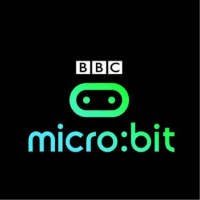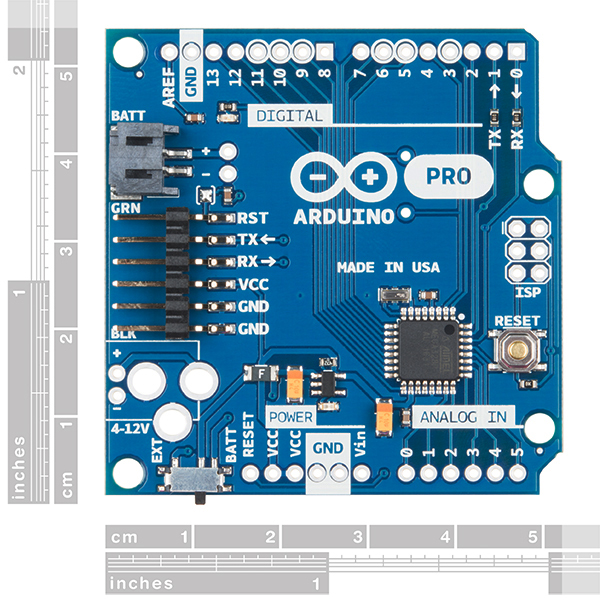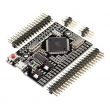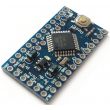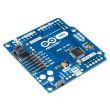Η GRobotronics σέβεται και προστατεύει τον καταναλωτή απο τυχόν ελλατωματικά προϊόντα και απο αγορές στις οποίες δεν έμεινε ευχαριστημένος. Προσπαθούμε να παρουσιάσουμε τα προϊόντα μας όσο καλύτερα και αναλυτικότερα γίνεται μέσω εικόνων και περιγραφών. Επιστροφές γίνονται δεκτές μόνο όταν τηρούνται οι παρακάτω όροι και έπειτα απο συνεννόηση με την εταιρεία μας.
Οι παρακάτω όροι ισχύουν μόνο για ηλεκτρονικές αγορές (εξαιρούνται οι παραγγελίες που έχουν σαν τρόπο αποστολής την παραλαβή απο το κατάστημα) μέσω του ηλεκτρονικού μας καταστήματος βάση της Ευρωπαικής Οδηγίας 2011/83/ΕΕ. Για αγορές που πραγματοποιούνται απο το δίκτυο των καταστηματών μας ισχύουν οι όροι επιστροφών που θα βρείτε αναρτημένους στο κάθε κατάστημα ή στο παραστατικό πώλησης.
Όροι Επιστροφών
- Τα προϊόντα θα πρέπει να είναι στην αρχική τους συσκευασία όπως ακριβώς τα παραλάβατε.
- Η εξωτερική και εσωτερική συσκευασία τους να είναι άψογη.
- Η ημερομηνία παραλαβής των προϊόντων να μην έχει υπερβεί τις 14 ημερολογιακές ημέρες.
- Το προϊόν που θα επιστρέψετε να συνοδεύεται απο το ανάλογο παραστατικό και το παραστατικό αγοράς.
- Σε όλες τις περιπτώσεις, που υπήρξε ελάττωμα στο προϊον ή λείπει συμφωνημένη ιδιότητα και δεν προβλέπεται διαφορετικά απο την εγγύση του κατασκευαστή.
- Για οποιαδήποτε επιστροφή θα πρέπει να έχει προηγηθεί συνεννόηση με την εταιρεία μας και να έχει σταλεί σε εμάς το απαραίτητο έγγραφο εντός 14 ημερολογιακών ημερών.
- Σε περιπτώσεις όπου αναλαμβάνει η εταιρεία μας την χρέωση μεταφορικών για την επιστροφή προϊόντων, θα γίνονται δεκτές μόνο όταν αυτές στέλνονται με κούριερ ACS.
Κόστος Επιστροφών
- Σε περιπτώσεις οπου παραλάβατε προϊόν ελλατωματικό:
Επιστρέφετε το προϊόν με έξοδα τα οποία αναλαμβάνει η εταιρείας μας. Το προϊόν ελέγχεται απο τον κατασκευαστή και πραγματοποιείται αντικατάσταση ή επισκευή. Το προϊόν στέλνεται πίσω με έξοδα τα οποία αναλαμβάνει εξίσου η εταιρεία μας (μόνο με κούριερ ACS).
- Σε περιπτώσεις όπου το προϊόν που παραλάβατε σταμάτησε να λειτουργεί ενώ είναι στην εγγύηση:
Επιστρέφετε το προϊόν με έξοδα τα οποία χρεώνεστε εσείς (καταναλωτής). Το προϊόν ελέγχεται από τον κατασκευαστή. Έπειτα απο την επισκευή ή αντικατάσταση του στέλνεται πίσω σε εσάς με έξοδα τα οποία αναλαμβάνει η εταιρεία μας.
- Σε περιπτώσεις όπου παραλάβατε προϊόν και επιθυμείτε την επιστροφή του και επιστροφή χρημάτων
Επιστρέφετε το προϊόν ακολουθώντας τους όρους επιστροφών και η χρέωση των μεταφορικών επιβαρύνει τον πελάτη. Επιστρέφεται όλη η αξία της παραγγελίας εκτός απο πρόσθετες αξίες όπου προέκυψαν έπειτα απο αίτημα του πελάτη. (π.χ. Επιπλέον χρεώσεις απο παραδόσης Σαββάτου)
- Σε περιπτώσεις όπου παραλάβατε προϊόν και επιθυμείτε την επιστροφή του και αντικατάσταση απο κάποιου άλλου
Επιστρέφετε το προϊόν ακολουθώντας τους όρους επιστροφών και η χρέωση των μεταφορικών για την επιστροφή του και την αποστολή νέου επιβαρύνει τον πελάτη.


